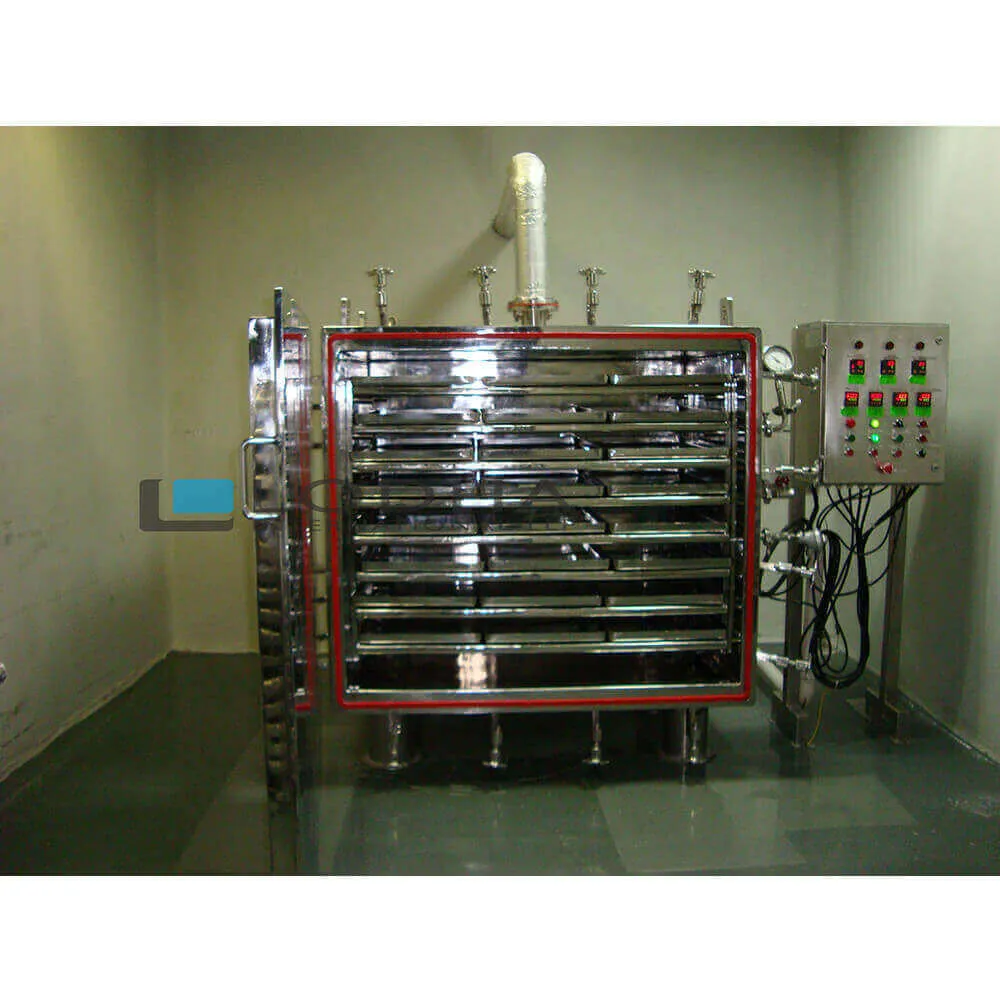Get in touch! +91 9687731331 | +91 9687631331 | info@lodhapharma.com
Automating the Vacuum Tray Dryer
The Vacuum Tray Dryer is one of the most popular types of batch drying equipment. A vacuum tray dryer is a box-shaped container with trays and several heating plates above the trays. The trays are typically made of a smooth material for optimal heat transfer. The medium flowing through the heating plates can be water, steam, thermal oil, or any combination of these. The distance between the heating plates is determined by the surface loading and the amount of foaming or condensation of the product.
Airflow to Trays in Vacuum Tray Dryer
Vacuum trays are used for chemicals, pharmaceuticals, and food items. The type of vacuum sealing tray used depends on the size and volume of the tray. A spherical or round shape provides better flow uniformity and better vacuum pressure distribution. Airflow to vacuum trays may also be influenced by the seeding manifold configuration. Typical vacuum trays have a small airflow capacity.
A tray dryer uses hot air to dry the material in the trays. The air passes over the trays in opposite directions, which ensures a constant flow. The air may be heated before it passes from one shelf to another, which reduces its latent heat of vaporisation. Airflow to vacuum trays can be either batch or semi-automatic. To determine the best drying option, consult the manual or the user's manual.
The Advanced Heat Transfer System in Vacuum Tray Dryer
A vacuum tray dryer is laboratory equipment used for drying high-grade materials that are temperature and oxygen-sensitive. Its primary purpose is to dry hygroscopic substances with minimal residual moisture. A vacuum tray dryer is an excellent option for laboratories that need to dry a wide variety of materials, including pharmaceutical products and sensitive materials such as tissue. Lodha International LLP is a leading manufacturer of pharmaceutical machinery equipment and houses a comprehensive line of vacuum trays.
The advanced heat transfer system is one of the key features of a vacuum tray dryer. It ensures even drying and even temperature distribution in the process. In addition to a vacuum tray dryer's ability to ensure uniform heat distribution throughout the entire drying chamber, this machine's design also includes features that are ergonomically designed to ensure easy operation and operator safety. It also boasts an optional nitrogen purge nozzle, which helps keep the environment clean and safe.

Automatic Programming of Temperature and Vacuum Profiles in Vacuum Tray Dryer
One of the most important aspects of a vacuum tray drying process is the accurate control of its temperature and airflow. Manual monitoring of these variables during the drying process is time-consuming. Automation eliminates the need for this tedious task by eliminating the need for manual data input and monitoring. The following sections describe the key components of a vacuum tray drying system and discuss some ways to automate them. Here are some examples:
Autonomous systems can reduce the human error associated with manual drying by reducing the operator's workload. With this automation, the unit's PLC, sensors, and solvent recovery system can be automatically programmed to determine the temperature and vacuum profiles necessary for successful drying. With this technology, operators can spend less time on manual tasks, which ultimately reduces operating costs.
Vacuum Tray Dryer are Easy to Use
The Vacuum Tray Dryer is a multi-purpose drying apparatus The unit comes, with sample trays and adjustable processing shelves, and more. A vacuum tray dryer is a highly efficient drying device. It requires lower average drying temperatures than standard dryers, allowing for faster drying of your products. Unlike standard dryers, these vacuum trays are compact, allowing the drying process to take place with less power. They are also effective for drying large quantities of moisture without compromising on accuracy. Vacuum tray dryers are ideal for hygroscopic materials and can dry products quickly and accurately.
Power Consumption with Vacuum Tray Dryer
A vacuum tray dryer is a type of batch dryer that uses a conduction principle to dry a wide variety of materials. The device consists of several heating plates and a door that has a vacuum seal around the edges. The trays are placed on these plates and heated by fluid that is circulated inside. The circulating fluid can also be used as a heat source for the cabinet's walls, which helps prevent the formation of water condensation.
The Bottom Line
A vacuum tray dryer can range from a few trays to many trays. Tray dryers can also come in models with attached air handling systems and cGMP certification. The cGMP-compliant design of a vacuum tray dryer includes a fan and a digital temperature controller. The resulting vacuum creates a dry environment and minimizes product quality loss.

